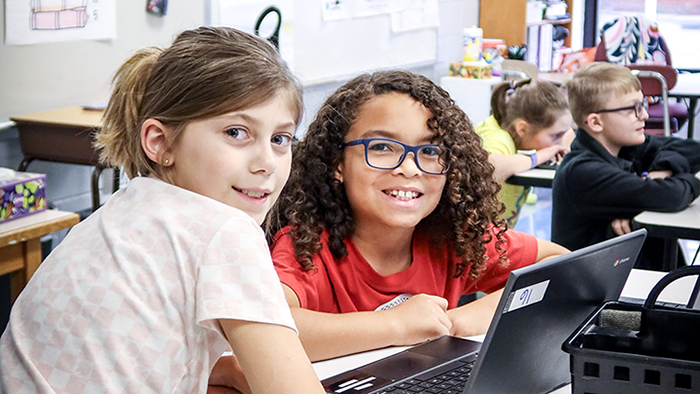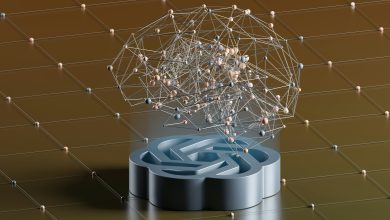
Artificial intelligence (AI) is no longer the futuristic concept it once was. It’s part of our present-day reality, and it’s quickly integrating into many facets of our lives. AI tools are becoming essential for both professionals and students for everything from writing emails to analyzing information to assisting with research.
This integration isn’t only driven by the availability of these tools. There’s also national momentum encouraged by the U.S. government’s commitment to removing regulatory obstacles and supporting the rapid development and integration of AI technologies.
As AI continues to permeate industries and educational institutions, we’re pressed with a big question: How can educational institutions prepare students for a world increasingly influenced by AI? The answer lies in an approach that balances the power of AI tools with crucial human-centered skills.
I firmly believe that human-centered skills are necessary for successful, responsible AI usage. An educational framework that emphasizes these critical skills is the starting point for building this balance.
Why AI Requires Human-Centered Skills
AI has changed the world significantly within only a few years, so it’s hard to imagine the changes it will bring when current elementary and even high school students enter the workforce. In the face of such uncertainty, career readiness in a future likely to be dominated by AI depends on cultivating the very skills that AI lacks.
AI can process data faster than any human, recognize patterns across massive data sets, and generate coherent text with the click of a button. But it cannot replace emotional intelligence, ethical reasoning, or nuanced communication. In both education and the workforce, the most effective use of AI requires human oversight, context, and judgment. The value of human-centered skills—those rooted in our capacity for empathy, self-awareness, and creative problem-solving—only becomes more critical.
For students, learning to work alongside AI begins with understanding its limits and their own strengths. Helping students navigate and responsibly use AI tools starts with building core human-centered competencies.
- Empathy fosters ethical decision-making and collaboration—two things AI cannot replicate but can be shaped by if humans lead with these values.
- Communication is vital for interpreting AI-generated outputs, resolving conflicts, and ensuring insights are meaningfully applied in human contexts.
- Self-awareness helps students identify bias in AI tools and stay grounded in their own thinking.
- Problem-solving helps define the problem, weigh outcomes, and evaluate whether a solution is truly beneficial.
How Global Education Can Prepare Students for Responsible AI Use
For students to truly integrate the human-centered skills needed for responsible AI use, they need a strong educational foundation that prepares them to act. Global education ensures that students are academically ready in the truest sense: They learn how to apply their knowledge to real-world issues that span both local and global contexts. This breadth of preparation equips them to navigate and contribute within a wider set of professions, making them better prepared to interact with AI in ways that are both responsible and relevant.
Centers on Empathy
Responsible AI use begins with empathy. Through global education, students regularly engage with diverse cultures and world issues, building emotional intelligence and cultural understanding. This ongoing exposure helps them recognize the real human impact of AI-driven decisions and applications.
Encourages Self- and Other-Awareness
Through reflection and identity development, students gain the self-awareness needed to engage critically with AI tools and recognize how their use affects others. Global education helps students see themselves as part of a broader global society, where actions—digital or otherwise—have ripple effects.
Strengthens Communication and Collaboration
Global education emphasizes communication and collaboration within students’ own communities and with people around the world, preparing them to work effectively with others when using AI tools in real-world settings.
Develops Critical Thinking Through Applied Learning
A hallmark of global education is its focus on applying academic knowledge to complex, real-world problems. Students engage in real-world, action-based projects that require them to analyze, question, and interpret information, helping them avoid implicit reliance on AI.
Fosters Curiosity and Problem-Solving
Real-world challenges presented in the global education curriculum invite students to ask better questions, seek different solutions, and integrate AI as one of many tools in their problem-solving toolkit.
Where Schools Can Begin with AI Use
Bringing human-centered skills—such as empathy, critical thinking, and collaboration—into everyday instruction is already part of what many classrooms do well. As AI becomes more present in learning environments, these foundational skills take on new relevance. Helping students apply these skills—especially in the context of emerging technologies—strengthens their readiness to use AI responsibly and meaningfully.
While many AI tools are intuitive—type a prompt, get a response—using them with care requires more than technical comfort. It also involves ethical awareness, clear boundaries, and thoughtful integration into how learning happens.
Across schools, approaches to AI are unfolding in different ways. Some are still exploring, while others are beginning to experiment with how to use AI in instruction. Regardless of where schools are in the process, the opportunity lies in helping students connect AI use to the same human skills they’re developing elsewhere in the classroom. This alignment deepens students’ understanding of how to use AI purposefully by guiding them to think critically, act with integrity, and remain active participants in their learning.
Draw the Line Between Tool and Shortcut
Helping students distinguish between using AI as a thinking partner and relying on it as a shortcut is one way educators can ground AI use in human-centered learning.
Teachers can support this by modeling how they use AI—for example, to generate ideas, organize notes, or check for clarity. While doing so, they continue to emphasize the value of showing one’s thought process. This allows students to see how AI fits within their own workflows and where it may fall short.
Students can also be invited to evaluate AI-generated content by comparing it to their own work or that of others. This kind of analysis fosters critical thinking, encourages reflection, and helps students assess the strengths, limitations, and implications of AI tools in their academic and everyday lives.
Balance Innovation with Responsibility
The time to prepare students for an AI-integrated present and future is here, but there are risks to rushing in without a clear framework. The goal isn’t to adopt AI tools for the sake of innovation, but to ensure they are used with integrity, purpose, and human judgment.
Schools play a critical role in helping students build the skills to lead—not just work—with AI. That begins with integrating real-world applications into instruction, giving students opportunities to practice the human intelligence skills of empathy, communication, critical thinking, and self-awareness—the same skills nurtured through global education—and continues with thoughtful, transparent practices around when and how AI should be used. Without this foundation, students may gain access to powerful tools but lose sight of the responsibility that comes with them.




